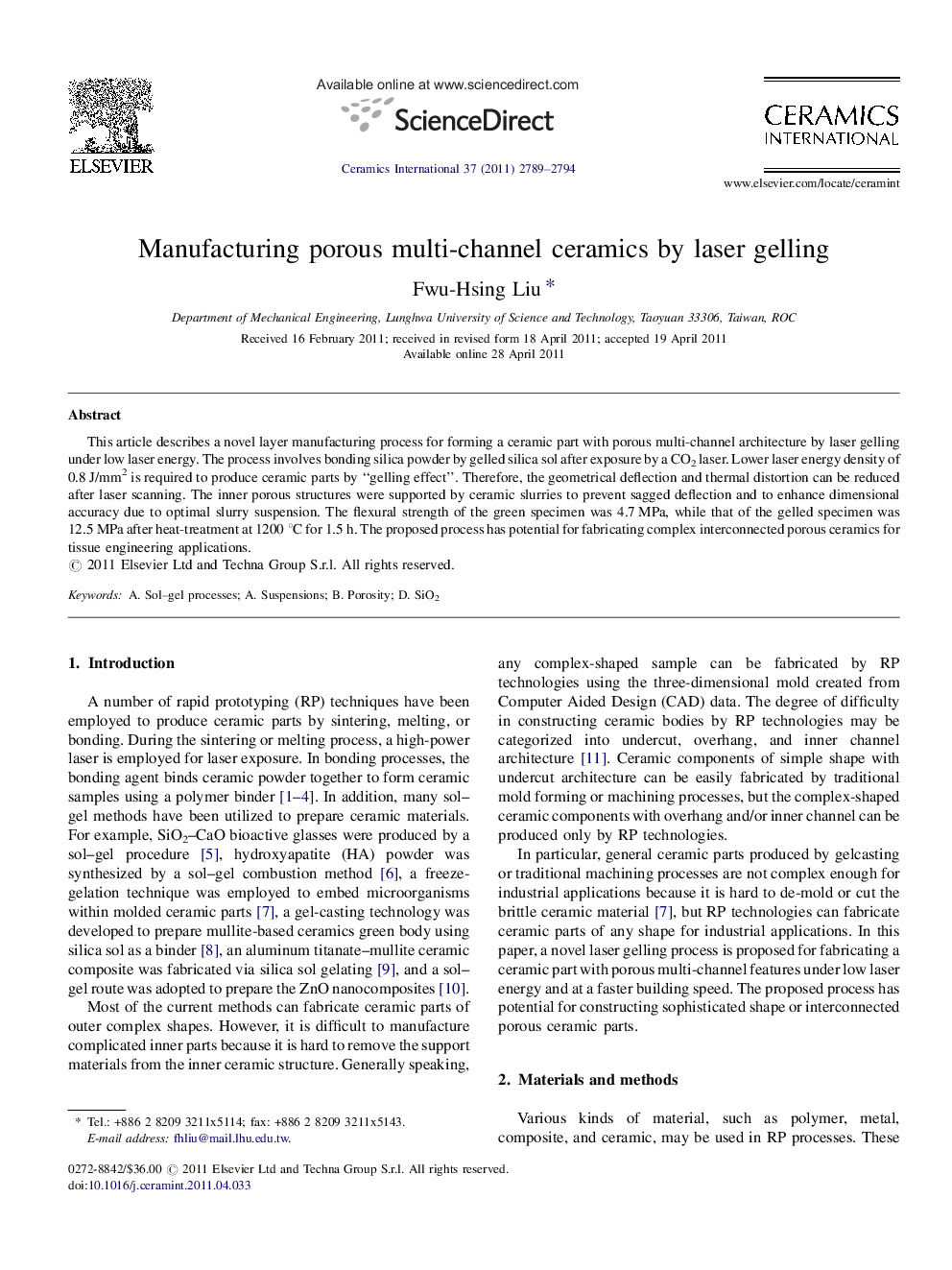| Article ID | Journal | Published Year | Pages | File Type |
|---|---|---|---|---|
| 1463270 | Ceramics International | 2011 | 6 Pages |
This article describes a novel layer manufacturing process for forming a ceramic part with porous multi-channel architecture by laser gelling under low laser energy. The process involves bonding silica powder by gelled silica sol after exposure by a CO2 laser. Lower laser energy density of 0.8 J/mm2 is required to produce ceramic parts by “gelling effect”. Therefore, the geometrical deflection and thermal distortion can be reduced after laser scanning. The inner porous structures were supported by ceramic slurries to prevent sagged deflection and to enhance dimensional accuracy due to optimal slurry suspension. The flexural strength of the green specimen was 4.7 MPa, while that of the gelled specimen was 12.5 MPa after heat-treatment at 1200 °C for 1.5 h. The proposed process has potential for fabricating complex interconnected porous ceramics for tissue engineering applications.
